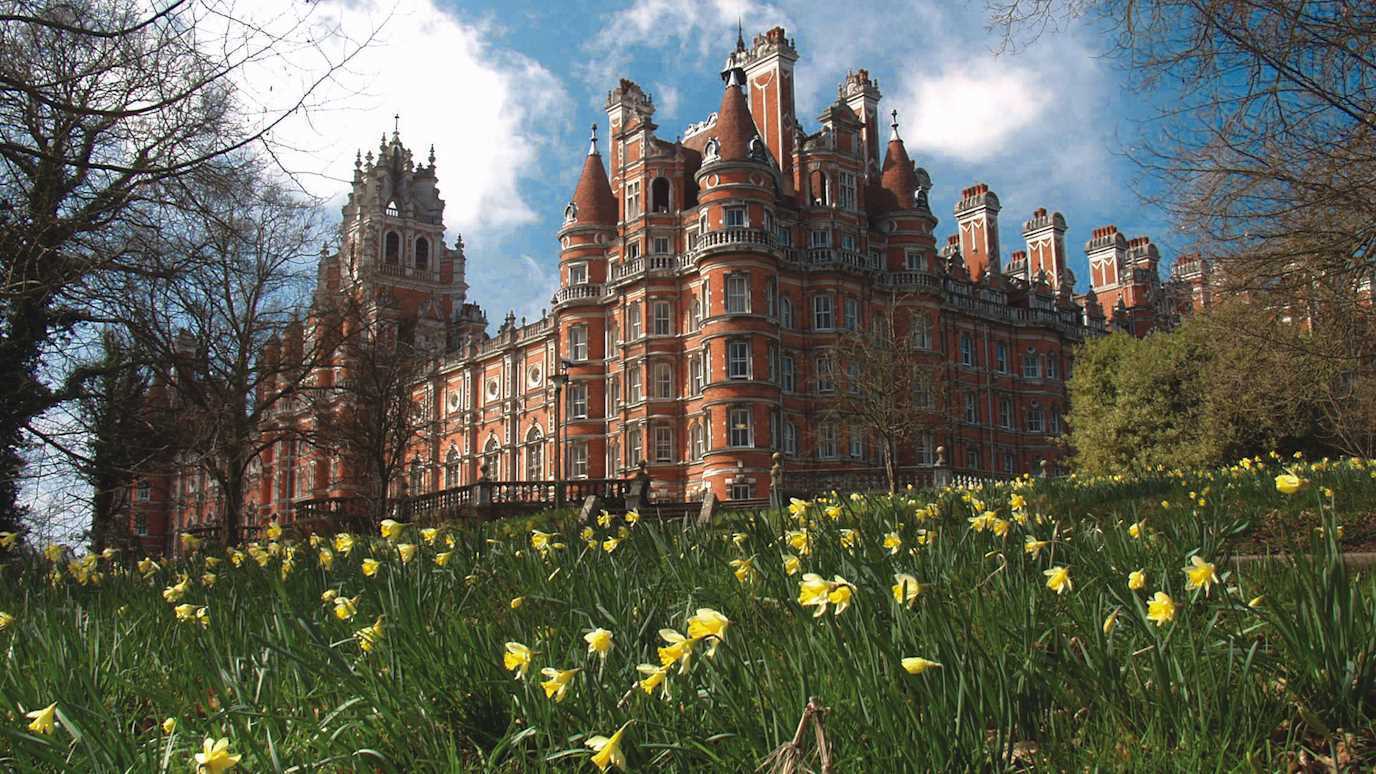Seminar Autumn 2024
The seminars take place on Wednesdays from 2-3 pm during term time in Arts Lecture Theatre 3. They are aimed to appeal to most of our staff and PhD students. They are followed by coffee, tea and biscuits in the McCrea building (next to room 0-08). Most times we will go to dinner afterwards.
18th September: Jan-Christoph Schlage-Puchta (University of Rostock)
Title: Numerical computation of the Witten zeta function of symmetric groups and Fenchel's conjecture
Let G be a group. Then define ζG(s), the Witten ζ-function of G, as the sum over all χ in Irr(G) of χ(1)-s, where Irr(G) denotes the set of irreducible characters. The series of functions ζSn(s) has first been studied by Lulov in the connection with random walks on Sn, later it was used to study the subgroup growth of surface groups and Fuchsian groups.
While the behaviour of ζSn(s) is easy to describe for when n tends to infinity, computing values for specific values of n and s is computationally demanding, as the number of representations of Sn grows like exp(π √(2n/3)).
Here we give an algorithm that produces reasonable approximations for ζSn(s) for medium sized values of n. As applications we prove a stronger versions of Fenchel's conjecture: Every Fuchsian group contains a torsion free subgroup of the minimal index for which such a subgroup is not prohibited by congruence restrictions.
2nd October at 3pm: Robert Johnson (Queen Mary, University of London)
Title: Correlation and Intersection: from Sets to Permutations via Orders
Starts at 3pm!
We will discuss two extremal topics on permutations.
The first is analogues of the Harris-Kleitman inequality for families of permutations. It turns out that there are two natural notions of what it means for a family of permutations to be an up-set (corresponding to the strong and weak Bruhat orders) and surprisingly the correlation that occurs in the two cases is quite different. The second is a new notion of intersection for permutations.
Through these two examples, we will see a framework for translating extremal set theory concepts into the realm of permutations which has the potential to yield many open questions.
This is joint work with Imre Leader and Eoin Long.
9th October: Heather Leitch (Royal Holloway, University of London)
Title: Introduction to Quantum Computing, Error Correction, and Quantum LDPC Codes
Although quantum computers have the potential to solve problems far beyond the reach of classical computers, they have one major drawback: they are highly susceptible to noise. Quantum error correction (QEC) is crucial to overcoming these challenges before we can build a fault-tolerant quantum computer. In this talk I will give an overview of the fundamental concepts of quantum computing and quantum error correction before introducing the main area of my work, quantum Low-Density Parity-Check (LDPC) codes. These error correction codes offer a promising low overhead approach to achieving fault-tolerant quantum computation.
16th October: Antony Hilton (University of Reading)
Title: The total chromatic number of a graph
The total chromatic number χT (G) of a graph G is the smallest number of colours needed to colour the vertices of G so that
1. no colour is used on two adjacent vertices,
2. no colour is used on two edges which have a common vertex,
3. no colour is used on a vertex v and an edge incident with v.
In 1964 and 1965 Behzad and Vizing independently conjectured that, for a simple graph G, χT ≤ ∆(G) + 2.
In this paper we prove this conjecture. We actually prove a generalisation of this conjecture.
Suppose that to each vertex and each edge there is assigned a paintbox (or list) so that if each paintbox contains at least cT(G) coloured paints, then G has a total colouring (i.e. each edge and each vertex gets a colour which is selected from the paintbox for that edge or for that vertex). If all the paintboxes have the same size then the least size for which this is always possible whatever the choice of paintboxes is called the total choice number cT(G) of G. We show that, for a simple graph G, cT(G) ≤ ∆(G) + 2. Clearly χT(G) ≤ cT(G).
23rd October: Will Cohen (University of Cambridge)
Title: Cohomology of Profinite Groups Acting on Profinite Trees
Given an abstract group G, a natural question to ask is what properties of G are visible in finite quotients. In particular, one may ask whether the cohomology of G can be read off in this way. We call a group cohomologically separable if this is possible in a "natural" way, i.e. if the map from a group to its profinite completion induces an isomorphism in cohomology. In this talk, I will introduce properly the concepts of cohomological separability and some of the main methods we have for proving separability of particular groups. I will then discuss how such methods can be adapted to less well behaved environments, and present recent joint work with Wykowski where we are able to prove exactly when Baumslag--Solitar groups are cohomologically separable.
30th October: Álvaro Gutiérrez Cáceres (University of Bristol)
Title: Shuffles that frustrate card-counters
A shuffle of a deck is an example of a Markov chain in the Cayley graph of a finite group G.
In a game such as blackjack, a player only observes a walk on the set of left cosets of G by a subgroup, in this case Sym(52) / (Sym(50) × Sym(2)). We say "card counters are frustrated" if the observations are independent from the history of past observations. That is, if the walk on cosets is a Markov chain. In probability, we say that the random walk lumps (weakly) to left cosets.
We give a new characterisation of weak lumping of random walks on groups. The results reveal interesting connections between group theory, probability theory, and representation theory.
(joint work with Edward Crane, Erin Russell, and Mark Wildon)
6th November: Steve Lester (King's College London)
Title: This distribution of lattice points in circles
The distribution of integer lattice points is a classical topic that lies at the intersection of number theory with harmonic analysis and also has connections to spectral theory and mathematical physics. A central problem in this area is the Gauss circle problem, which is to determine the number of integer lattice points that lie within a circle with a large radius. In this talk I will discuss the distribution of lattice points lying in circles with large radii in both the classical and hyperbolic settings and will also describe some recent results. The talk is aimed at a broad mathematical audience and no prior knowledge on the topic will be assumed.
13th November: Olivea Reade (Open University)
Title: Chiral maps of arbitrary type with alternating automorphism group
An orientably-regular map is an embedding of a graph on an orientable surface which demonstrates as much rotational symmetry as possible. The rotary automorphism group is generated by the natural rotations around a face and incident vertex. Examples include the Platonic solids, which can be viewed as graphs on the sphere. If an orientably-regular map lacks reflectional symmetry, then it is said to be chiral.
In this talk I will use permutation diagrams, to extend the proof of the existence of hyperbolic chiral maps of given vertex valency and face length, thereby proving that such maps exist with simple (alternating) automorphism group.
20th November: Clare Munro (University of Cambridge)
Title: Bio Inspired Nanophotonic Devices to Control Light Emission on a Chip
Abstract: The natural world, through billions of years of evolution, has offered a plethora of different geometries for which light matter interactions have been optimised. Plants, flowers and insects host ingenious nanoscale arrangements that manipulate light through the absorbance and reflection; harvesting energy and producing fascinating colours. The most intriguing of the designs are patterns that form in an aperiodic structure, one with no symmetry or periodicity however also do not display disorder. When illuminated with light they show exciting light matter interactions incorporating both the desirable properties of both periodic and disordered designs. An example of these aperiodic designs would be the arrangement of seeds in a sunflower head. This pattern, also known as a Golden Angle Vogel Spiral, has shown to exhibit multi-wavelength enhanced emission which is wavelength tuneable and has the ability to emit single photons. Through the understanding of maxwells equations, statistical mechanics and quantum optics the design of these aperiodic geometries can be optimised for enhanced light confinement, leading to novel applications in lasing, quantum communications and multi-dimensional data storage.
Extra seminar Thursday 21st November at 4pm in Bourn LT2
Title: Solving the Lifting Problem
In this talk, we will explore how algebraic integers can be represented by quadratic forms in totally real number fields. We will focus on the lifting problem, which has its roots in Siegel's famous work on the sums of powers of algebraic integers. In low-degree number fields, we have successfully solved this problem in full. These results are part of my collaboration with Vita Kala.
27th November: Salma El-Serafy (Royal Holloway, University of London)
4th December: Martin Widmer (Royal Holloway, University of London)
11th December: Julia Wolf (University of Cambridge)





















